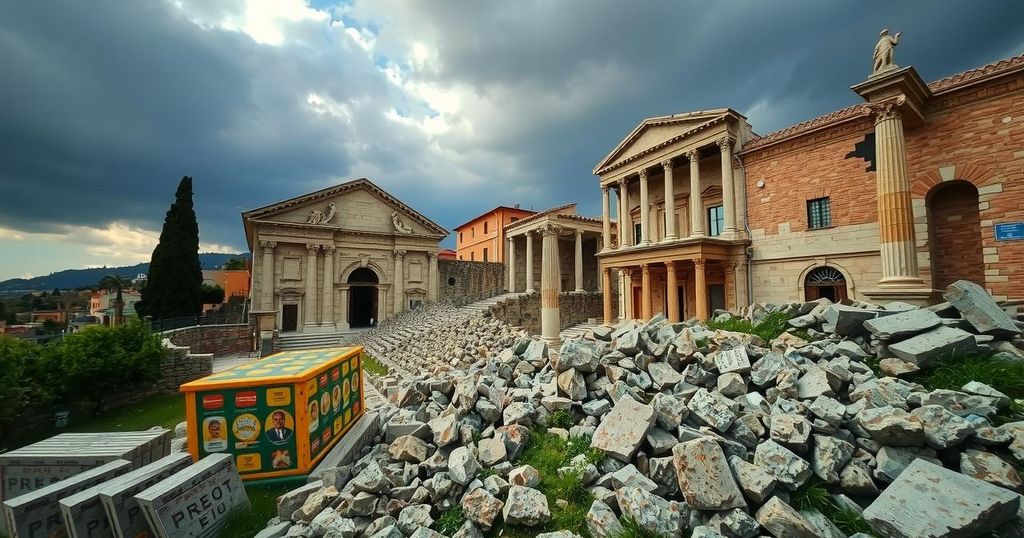The Role of Earthquakes in the Death Toll of Pompeii’s Eruption

A study has found that earthquakes may have significantly contributed to the death toll in Pompeii during the A.D. 79 eruption of Mount Vesuvius. Evidence indicates that victims sought shelter inside buildings that ultimately collapsed due to seismic activity, highlighting the complex dynamics of the disaster and its effects on the populace.
Recent research has revealed that the catastrophic events of A.D. 79 in Pompeii were exacerbated by earthquakes in addition to the volcanic eruption. Historical accounts, particularly by Pliny the Younger, suggest that intense ground tremors contributed to the tragedy. Archaeological findings of two skeletal remains in a house where renovations were abruptly halted indicate that survivors sought refuge indoors, only to be fatally crushed by collapsing structures due to seismic activity after the initial ashfall. This discovery sheds new light on the experiences of Pompeii’s inhabitants on that fateful day, illustrating that the disaster involved a complex interplay of volcanic and seismic forces.
The eruption of Mount Vesuvius in A.D. 79 is widely recognized as one of the deadliest natural disasters in the ancient world, resulting in the deaths of thousands and the destruction of cities such as Pompeii and Herculaneum. While volcanic material was known to be the primary cause of death, new evidence suggests that earthquakes also played a critical role in the disaster. The work of volcanologists and archaeologists has illuminated the chaotic conditions faced by the residents of Pompeii as they navigated both the threats posed by the eruption and the resulting seismic shocks.
This study offers a nuanced perspective on the dual threats faced by the residents of Pompeii during the volcanic eruption. By highlighting the crucial role of earthquakes, the research enriches our understanding of the disaster and its impact on the victims. Furthermore, it reveals that the victims were not solely those who were unable to escape, but included a diverse group whose lives were tragically interrupted by the forces of nature.
Original Source: www.snexplores.org







